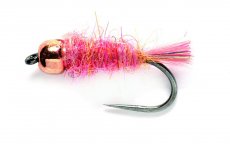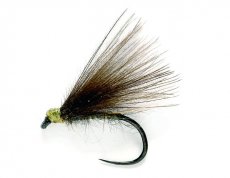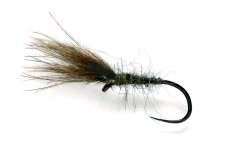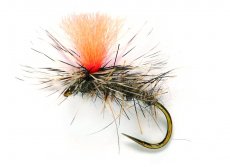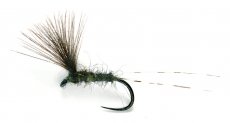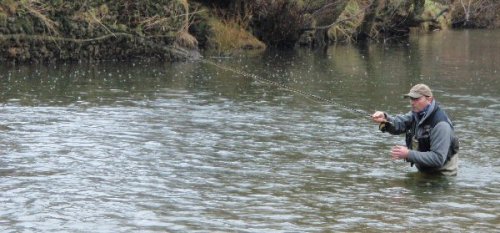My main contribution to this outstanding river fly selection was with some of my key 'tactical' patterns that were largely derived from my years in competitive fly fishing...
My main contribution to this outstanding river fly selection (Fulling Mill Tactical Series) was with some of my key 'tactical' patterns that were largely derived from my years in competitive fly fishing. They are not my own design of flies, with the possible exception of the Tup Wool Bug, but variations on themes developed by others, adapted for the demands of short range (sub-10 metre) fishing for trout and grayling. Indeed, almost all fly design is thus: we evolve what has gone before for particular requirements. We do this mostly with novel use of materials and their application to the fly in terms of GISS and dynamics. This is the case with 'my' flies in this series.
The Tup Wool Bug was designed with autumn and winter grayling very much in mind. I have always loved Sawyer's Killer Bug but found that the Chadwick wool of the original was too dull a hue for the northern grayling waters I mostly fish. I spent a long time finding the right shade of pink for this pattern, because without a doubt if it is too strong I think it can very easily spook fish. I finally worked out the ideal colour by dying course sheep wool and dubbing it onto fluorescent pink tying thread. After two years of use, really perfecting the colour and the nature of the bug, I passed it over to FM who worked at the colour (and texture) of the dubbing until the final fly was indistinguishable to my own.
It is an incredibly effective fly, particularly in slightly coloured water. I love it in the middle dropper position of a classical Czech-style nymph leader, or on point of a 'French leader' (Leader-to-hand) rig. It is as effective for wild trout as it is for grayling. We have noticed that it is astonishing at salmon spawning time and it really does seem to have an egg-like glow, largely by virtue of the loose body dubbing.
The Sawyer-style PTNs, are now classical, generic ephemerid nymph patterns with the added triggers of pearl mylar, hare mask thorax dubbing or bright coloured collars, and copper (or gold) tungsten beads, the latter of which produce the ideal density (without bulk of body shape) for shallow water nymphing, again ideal for the Leader-to-hand style, and for me simply the most reliable ever patterns for duo and trio rigs (single and double nymph under dry).
The Oppo stemmed from a need to design the ideal dry fly for use with duo rigs, with the PTN variants as the nymph on point. I wanted buoyancy (enough to support one or two nymphs) as well as good visibility at sub-10 metre range, with a hook point projected below the surface film. A parachute hackle was essential for producing a strong, buoyant footprint, helped by the polypropylene wing post. The orange colour produces the visibility and it is striking how easily the Oppo is picked out in foam-flecked water. I combined a genetic Cree para hackle with the orange polypropylene post to achieve this, on the perfect hook, the barbless FM all purpose light, which has a reasonably long hook shank. Hare mask is dubbed fairly sparsely on abdomen and thorax. The whole fly is greased to increase longevity of buoyancy. The final result is two-fold. It serves the purpose of supporting the nymph(s) and acting as an indicator of a take, but significantly it is itself consistently taken by both trout and grayling. It is my first choice for duo (and trio) rigs, and I frequently use it as a single dry fly in circumstances where there is little surface activity or no definite hatch.
The CdC patterns ascribed to my contribution are primarily as a result of considerable fishing on European rivers, particularly the San, in Poland. Of course, being essentially ephemerid emerger and dun imitations, they work wherever these upwing species are found. They are also passable midge and small caddis imitations in the shuttlecock or F-Fly variations. The Upwing CdC variant in the series, is the best generic olive pattern I have ever used. The GISS, footprint and buoyancy are excellent, and the touch of the split-tailed Coq de Leon, which also adds stability to the fly on the surface, is a wonderful trigger.
Full assortment of Fulling Mill Tactical Series available in our eShop.
Jeremy is APGAI qualified guide in UK and can be contacted via his website.








